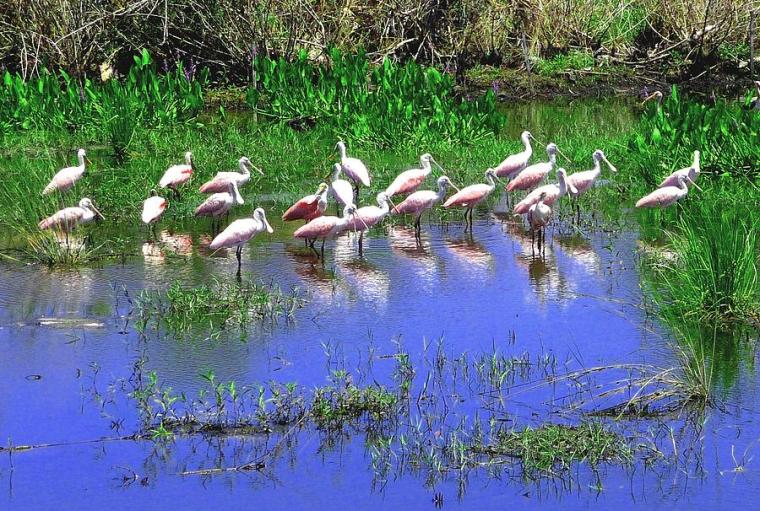IN FEBRUARY WE WROTE ABOUT HOW THE SPOONBILL MARSH “DOES” WORK.
This was our third article about how City Counselor Jay Kramer was overheard in the City Council hallway, a public building, saying Spoonbill Marsh “doesn’t work.”
After two un-responded to emails to Counselor Kramer inquiring about what documentation he has to say so; and a voice mail saying I would report that he had not responded, Commissioner Kramer quickly called me. We spoke and I asked for documentation to the effect it “doesn’t work.” He said he would “go across the street” to get the data for me. Then he indicated in an email I could access the data on a Florida Department of Environmental Affairs “Oculous” website.
I went to the Oculous website and found I would need a MIT degree to navigate it. Then I contacted IRC County Commissioner Solari, since it was the County’s project. Commissioner Solari quickly responded saying: “If the Spoonbill Marsh is not working, I want to know about it because the citizens have a right to know. And why would we want to continue paying taxpayers’ money to operate something that was not working.”
Commissioner Solari subsequently sent a public information request to Counselor Kramer for data on why Spoonbill was not working. Counselor Kramer responded by sending Commissioner Solari a copy of his email to me advising me to access the Oculous website.
To use the overused expression, we “reached out,” to the Florida Department of Environmental Protection (FDEP) for help in determining if Spoonbill Marsh was or was not working. Thanks to the efforts of Ms. Erma Slager, who was very generous with her time and others at FDEP to obtain the requested FDEP documentation, this is the report she provided.
February 10, 2015
Hello Mr. Hardy-
Spoonbill Marsh treats both demineralized reverse osmosis brine concentrate from the Indian River County Utilities treatment facility and the Indian River Lagoon which are mixed at the head-works of Spoonbill Marsh. The combined water then flows through the cells of the Spoonbill Marsh where nutrient uptake is accounted for by the natural flora and fauna in the marsh before the treated waters are discharged back to the Indian River Lagoon.
As required in its permit, Indian River County Utilities has provided detailed Total Nitrogen (TN) and Total Phosphorus (TP) removal information/data to the department on a weekly, monthly and annual basis for the years 2010,2012,2013,2014. The department has used this data to estimate the annual TN and TP intake loads. To calculate the TN and TP reductions, department staff identified the difference between intake loads (from brine concentrate and Indian River Lagoon intake) and the outlet loads back to into the Indian River Lagoon. Based on four years of data, the calculations indicate that the removal for Spoonbill Marsh is approximately 10,500 lbs of TN and 2,700 lbs of TP.
Thank you for your patience and if there’s anything else I can do for you, please don’t hesitate to contact me.
Have a great afternoon,
Erma Slager
Florida Department of Environment Protection
Office of Communications
Press Office
As supported by this documentation, Spoonbill Marsh is performing as it was intended to.
Why would an elected official, who wants to go on to higher office, say it “doesn’t work” without supporting documentation?
We did our homework.

Pingback: Our Correspondence with the Florida Environmental Protection Agency About Spoonbill Marsh. | Vero Communiqué
Pingback: Shapiro and Taylor Continue to Lash Out on Spoonbill Marsh Despite Science That Deep Well Injection is Out of Sight, Out of Mind. What is Their Agenda? | Vero Communiqué